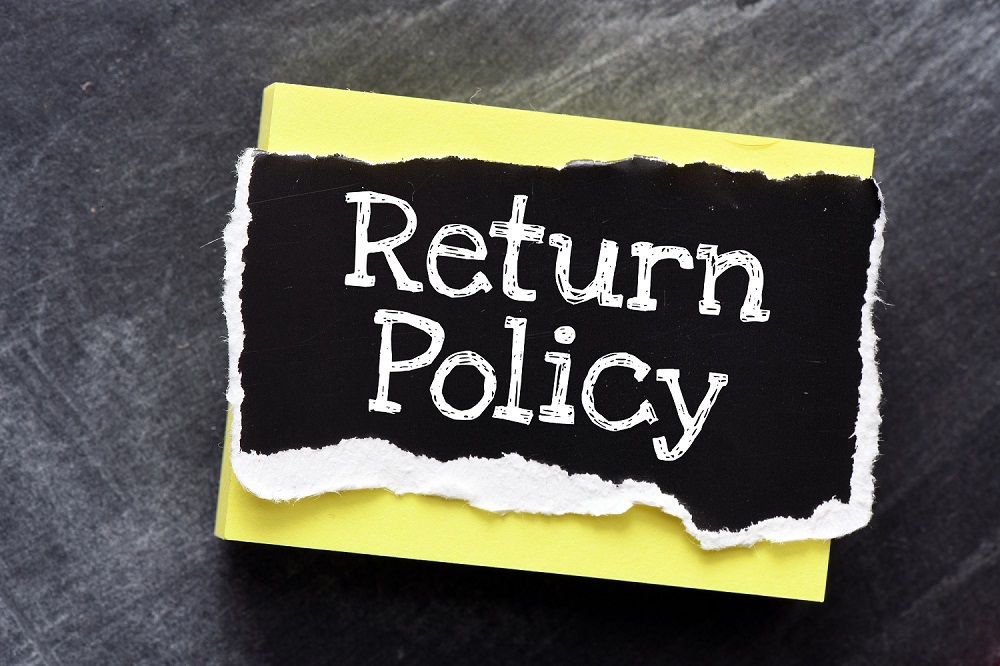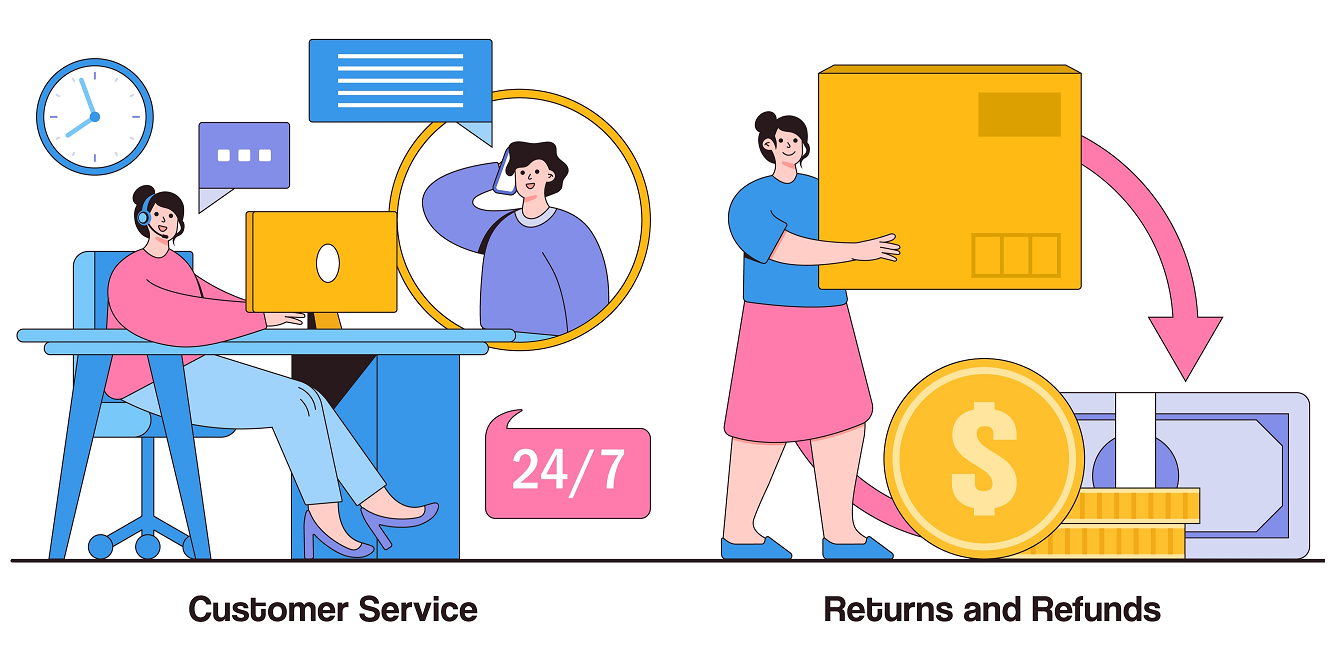Returns and refunds are just as inevitable in eCommerce stores as they are in brick-and-mortar ones. Sometimes, customers are just not satisfied with what they bought online and wish to undo their purchase altogether. The satisfaction of a completed sale is something that business owners cherish, but not all transactions go as smoothly as they hope. In reality, 30% of products ordered online are returned – a significant difference from the 8.89% of returns that concrete stores usually face. The good news here is that over 92% of consumers say they’ll buy again if the return is easy.
Returns vs. Refunds
Although returns and refunds often go hand in hand when it comes to business, they actually mean two very different things. Let’s start with returns. Returns are basically when a customer wants to send back a product they bought but didn’t like enough to keep. This could stem from various reasons ranging from second thoughts to finding defects in the received item or items. After the products are returned, business owners can approach this situation in two different ways: either by issuing a refund or offering an exchange.
Refunds are simply the reimbursement of payments made by customers who opted to return products they ordered. Some stores also allow customers to make exchanges, wherein instead of getting their money back, they can swap their purchased items with different products from the store.
What is a Returns and Refunds Policy

To keep returns and refunds from adversely impacting your eCommerce business without sacrificing your relationship with your customers, a good returns and refunds policy should be established. A returns and refunds policy is the middle ground between store owners and customers who wish to reverse a purchase that didn’t meet their expectations.
Importance of a Returns and Refunds Policy

At this point, returns and refunds may seem like obstacles in growing your eCommerce business. Yet, that’s only one way of looking at it. Most stores offer this sort of compensation to unsatisfied customers because it shows that they prioritize their customers’ shopping experience – but this shouldn’t come at the cost of your brand’s growth. In 2020, $428 billion worth of eCommerce products were returned in the U.S. alone.
Almost all respectable businesses, may they be online or not, have a returns and refunds policy in place. This is not only to protect the best interests of a brand but also to assure shoppers of your integrity and desire to foster a good business-to-customer relationship. Having a well-thought-out returns and refunds policy will show customers how trustworthy your business is – this could help you maximize your brand presence and lead to increased sales and strong customer ties.
How to write a good Returns and Refunds Policy

In this article, we are going to dissect the parts that constitute a good returns and refunds policy. The way it is structured can either make or break your brand; so you must ponder on what you want to get out of your returns and refunds policy before even thinking about opening your text editor.
Things to Cover in a Returns and Refunds Policy

The contents of your returns and refunds policy will depend on what type of products or services your eCommerce business offers. Although there are some aspects to it that are universal to online retailers:
- The return and refund process. Your returns and refunds policy should be able to give customers a clear picture of the step-by-step process – from how to reach you all the way down to how and when they’ll receive the appropriate compensation.
- The return requirements and limitations. If your store specializes in clothing, chances are you do not allow the returning of specific items such as undergarments or anything with broken seals or packaging due to hygiene concerns. You should set requirements and limitations for returning items based on their product type or condition. Make sure to disclose this section as clearly as you can to prevent any misunderstanding.
- The mode of compensation. This is where you decide how you want to compensate for returns. You make choose to refund your customers or give them the opportunity to exchange their returned items with different products. Some stores offer both options but only allow one of them depending on the type of product that has been sent back.
- The window of opportunity. It is important to stipulate a timeframe for returning items. Most eCommerce websites allow customers up to 30 days upon purchase to return products, some are more airtight and permit a maximum of 7 days. This is to ensure that the quality of the items that are to be sent back will not be compromised. Some companies have experienced considerable losses due to lenient rules concerning the timeframe for returns.
How to Construct a Good Returns and Refunds Policy

A returns and refunds policy is first and foremost a technical document that is meant to help your consumers gain a better grasp of how you address returns. Your writing style and word choice have important roles to play in constructing a good returns and refunds policy. How it is written can either inspire trust in your customers or cause them to be skeptical. Here are some of the things to bear in mind when crafting your returns and refunds policy:
- Clarity. This is the top priority if you wish to create the best returns and refunds policy for your online business. Keep the overall structure as simple and understandable as possible, there’s no need for embellishments or an entertaining tone. Think of how you organize each section of the policy to better fit the order of the whole return and refund process. Customers would prefer a policy that cuts to the chase.
- Language. Along with the first item, use language that is accessible. Avoid complex jargon or slang words. The language you choose to utilize while writing your returns and refunds policy will also define your reputation as a brand. Be mindful when writing your sentences and consider your audience.
- Transparency. Disclose all information that you deem necessary to help customers gain insight into how you address their issues and concerns. This can help consumers build confidence in your brand and perhaps even extend their interest in engaging with your business which can lead to increased customer lifetime value (CLV) – which is the total income of a business from a single customer over the course of their relationship.
- Assistance. It would also be a good idea to consider asking for professional help when crafting policies for your eCommerce business. This can provide you with a leg up on how to draft a returns and refunds policy that you and your customers can benefit from. Seek the help of learned individuals in the field of eCommerce if you want to further improve your returns and refunds policy.
Conclusion
Having a well-written eCommerce returns and refunds policy is like hitting two birds with one stone – you get to accommodate your customers’ concerns in a way that proves your dedication to providing the best possible shopping experience, therefore, bolstering their confidence in your brand without jeopardizing the welfare of your business. Remember, creating policies is as much a matter of providing information as making a good impression on your future and current clients.
The post How to Write an Ecommerce Returns and Refunds Policy appeared first on PinnacleCart's eCommerce Blog – Tips for Growing your Online Store.






